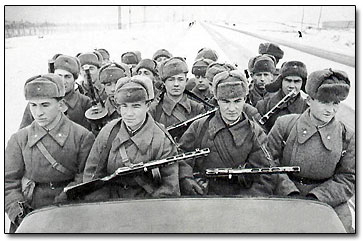Given that the drift error on the 1892 and 1896 sights is greater than the elevation error on that combination out past 500 yards, and isn't correctable, I guess the answer is "no."
That does assume that they've discovered time and again that effective infantry fire exceeds 300 meters. Which, from at least 1861 to 1945, wasn't the case.
Take a good look at the standard Brit WW2 rifle rear sight. Then look at the WW1 edition.
Cuba, P.I.. I guess they learned something. Forgotten soon enough but learned again in 1917. Then again in 1942.
War is a heck of a school for reality. All the theory goes out the door immediately. Then the professionals take over again after and the drift returns. The next war again hammers home the lessons of reality. Rinse and repeat.
What do you figure the range is there?
Reality. I doubt they missed their targets.






 Reply With Quote
Reply With Quote




